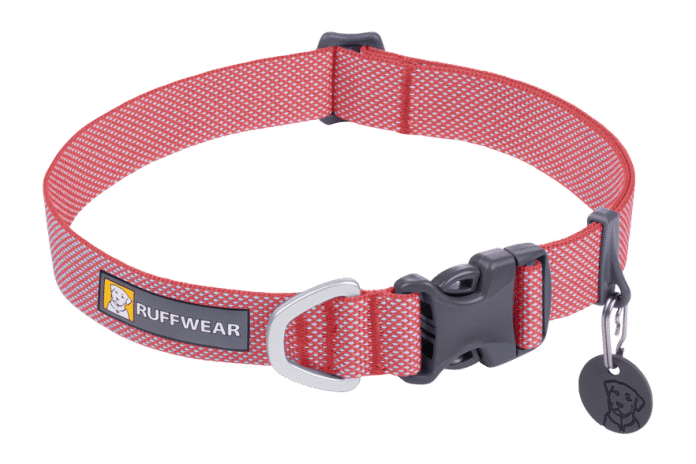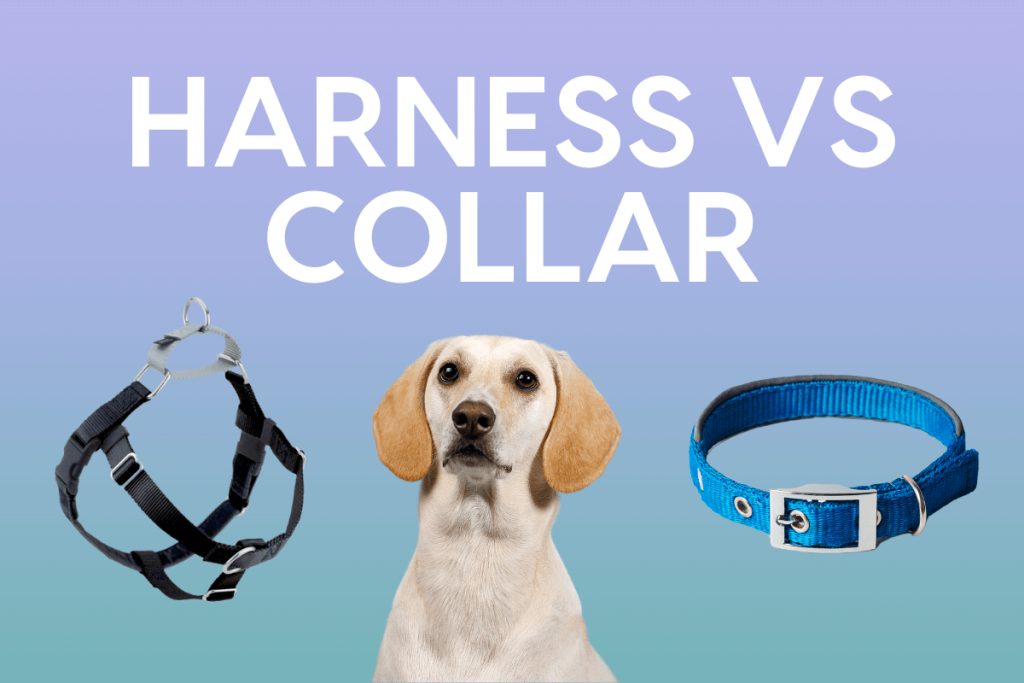This article will explore the potential drawbacks of using dog collars. Dog collars have long been a staple accessory for our beloved canine companions, allowing us to quickly identify them, provide necessary information, and even attach a leash for walks.
However, it is essential to consider the potential adverse effects that these collars may have on our furry friends.
From discomfort and irritation to potential injury, let’s uncover the cons of using dog collars and explore alternative options that prioritize the well-being and safety of our pets.
This image is the property of images.saymedia-content.com.
Physical Discomfort
Neck Injuries
One of the main concerns with dog collars is the potential for neck injuries. The constant pressure of the collar around the neck can strain the muscles and joints, causing discomfort or even injury. Dogs with existing neck conditions may be particularly vulnerable to these injuries. Choosing a collar that fits properly and does not constrict or rub against the neck excessively is essential to minimize the risk of neck injuries.
Skin Irritation
Another downside of dog collars is the possibility of skin irritation. The friction and pressure from the collar can lead to chafing, inflammation, and even skin infections. This can be especially problematic for dogs with sensitive skin or allergies. Regularly inspecting the neck area and collar for any signs of irritation and providing proper care and cleanliness can help prevent skin problems associated with collars.
Restricted Movement
Wearing a collar can also restrict a dog’s movement to some extent. The tightness of the collar and its positioning around the neck can limit the dog’s natural range of motion, hindering their ability to turn their head or move freely. This restricted movement may be uncomfortable for the dog and potentially impact their well-being. Ensuring that the collar is adjusted correctly and does not unnecessarily inhibit the dog’s movement is crucial.
Strangulation Risks
Accidental Hanging
One of the most significant dangers of dog collars is the risk of accidental hanging. If a collar gets caught on an object, such as a branch or fence, or the dog pulls excessively on a leash, the collar might tighten and strangle the dog. This potential for accidental hanging is a severe concern and emphasizes the need for careful supervision and appropriate training when using collars.
Getting Caught in Objects
In addition to accidental hanging, dog collars can also pose a risk of getting caught in various objects. Dogs are naturally curious and can quickly get their collar caught on furniture, crates, or other items around the house or outdoors. When a dog gets trapped in an object, it can cause panic, distress, and potential injury as they struggle to free themselves. Regularly checking the dog’s collar for entanglements and ensuring a safe environment can help mitigate this risk.
Choking Hazard
Dog collars, especially those with buckles or tags, can present a choking hazard. If a dog chews or bites the collar, it is possible to ingest small parts or even break off a piece of the collar, which can become lodged in the throat. This poses a severe health risk and may require urgent medical attention. Avoiding collars with detachable parts and supervising dogs when they are wearing a collar can help reduce the risk of choking incidents.
Behavioral Issues
Increased Aggression
Some dog owners have reported an increase in aggression when dogs wear collars. It is believed that the constant pressure and discomfort from the collar can lead to irritability and frustration, which may manifest as aggressive behavior towards humans or other animals. It is essential to monitor the dog’s behavior closely while wearing a collar and promptly address any signs of aggression to ensure everyone involved’s safety.
Fear and Anxiety
Wearing a collar can also induce fear and anxiety in some dogs. The association between the collar and potential discomfort or negative experiences can create a sense of unease and apprehension. This fear and anxiety can manifest in various ways, such as excessive panting, trembling, or avoidance behaviors. Alternative identification and training methods may be worth considering for dogs prone to anxiety.
Inhibited Socialization
Collars can hurt a dog’s socialization process. The discomfort and restricted movement caused by a collar can make dogs more hesitant and less confident in new situations or interactions with other dogs. This inhibition in socialization can affect a dog’s overall well-being and potentially lead to behavioral problems. It is crucial to provide positive experiences and socialization opportunities that are comfortable for the dog to counterbalance any potential adverse effects of wearing a collar.
Medical Concerns
Eye and Ear Problems
Specific dog collars, particularly those with protruding buckles or tags, can pose a risk to the eyes and ears. Collars that rub against the dog’s face or pressure the ears can lead to abrasions, infections, or even damage the delicate eye structures. Opting for collars designed with safety features to minimize contact with the face and ears can help reduce the risk of these medical concerns.
Breathing Difficulties
The pressure from a collar around the neck can also affect a dog’s breathing. When a collar is too tight, or the dog pulls excessively while on a leash, it can put unnecessary pressure on the trachea and restrict airflow. This can lead to breathing difficulties and discomfort for the dog. Using harnesses or alternative restraint methods that distribute pressure more evenly can effectively prevent breathing issues associated with collars.
Thyroid Issues
Another medical concern related to dog collars is the potential impact on the thyroid gland. The constant pressure on the throat area can disrupt the function of the thyroid gland, which plays a vital role in regulating metabolism and overall health. Dogs with preexisting thyroid conditions may be more susceptible to the adverse effects of collar pressure on the gland. Regular monitoring of thyroid levels and consulting with a veterinarian can help address and manage any resulting thyroid issues.
This image is the property of cdn-fastly.petguide.com.
Negative Training Associations
Punishment-Based Training
Dog collars, particularly those designed for training, can be associated with punishment-based training methods. Using force or uncomfortable sensations as a correction can create a hostile training environment and potentially lead to adverse behavioral outcomes. Positive reinforcement and reward-based training methods can promote desirable behaviors and maintain a healthy bond between the dog and their owner.
Fear Conditioning
The discomfort and possible pain caused by some dog collars can result in fear conditioning. When dogs experience consistent discomfort while wearing a collar, they may associate that discomfort with specific actions, people, or situations. This fear conditioning can create profound anxiety in the dog and hinder their ability to learn and adapt to new experiences or environments. It is crucial to prioritize the psychological well-being of the dog and opt for training methods that foster a positive and trusting relationship.
Conditioned Aversion
Collars used for aversive training techniques can establish conditioned aversions in dogs. When collars are associated with unpleasant experiences, dogs can develop a deep-rooted aversion to the collar. This aversion can lead to resistance, fear, and avoidance behaviors when attempting to collar or restrain the dog in the future. Focusing on force-free and positive reinforcement approaches can help prevent conditioned aversions and cultivate a cooperative and willing attitude in dogs.
Safety Hazards
Lack of Identification
While collars are often used to identify dogs, they can sometimes present a safety hazard. If a collar does not have proper identification tags or gets lost or removed, it can prevent the dog from being easily identified and returned to their owner. It is essential to regularly update identification tags and consider additional forms of identification, such as microchipping, to ensure the dog’s safety and secure their return in case they become lost.
Risk of Escaping
For dogs prone to escaping or tend to flee, collars alone may not provide sufficient security. If a collar is not fitted correctly or if the dog’s neck size changes, there is a risk that the dog can slip out of the collar and escape. Supplementing collars with secure harnesses or double-leashing can be more reliable for preventing escapes and keeping the dog safe.
Stray Collars
Stray collars, also known as collar accidents, are another safety concern associated with dog collars. If a collar gets caught on an object while a dog is unsupervised, the dog may become trapped or entangled, leading to injury or, in extreme cases, death. Removing collars when dogs are in potentially dangerous or unsupervised situations is crucial to minimize the risk of stray collars and ensure the dog’s overall safety.
This image is the property of www.thesprucepets.com.
Limited Communication
Interferes with Body Language
Collars can interfere with a dog’s communication ability through body language. The pressure and sensation of wearing a collar can restrict the dog’s natural movements and inhibit their ability to express themselves nonverbally. This limitation in communication can lead to misunderstandings between dogs and humans, potentially resulting in frustration or conflicts. Attention to other forms of communication, such as facial expressions and tail wagging, is crucial for understanding a dog’s needs and emotions.
Reduced Nonverbal Cues
In addition to hindering body language, collars can also reduce the visibility and effectiveness of nonverbal cues in dogs. Specific collars, such as those with large tags or excessive accessories, can obstruct the dog’s face and the view of critical nonverbal signals, such as ear movements or facial expressions. This reduction in nonverbal cues can make it challenging for owners and other animals to interpret the dog’s intentions and emotional state accurately.
Obstacles in Training
When training a dog, effective communication is essential. Unfortunately, collars can create obstacles in training due to the limitations they impose on a dog’s movement and expression. The discomfort or irritation caused by a collar can distract the dog from the training process and hinder their ability to focus and respond to commands. Exploring alternative training methods that do not involve collars or focusing on positive reinforcement techniques can help overcome these obstacles and promote successful training outcomes.
Clogged Energy Flow
Meridian Blockage
Some proponents of alternative medicine theories believe that dog collars can cause blockages in the flow of energy along the meridians in a dog’s body. These meridians are believed to be channels through which vital energy, or Qi, flows. Any disruption or blockage in these meridians can lead to imbalances and potential health issues. However, it is essential to note that these theories are not scientifically proven, and most of the scientific community considers the concept of energy flow through meridians as pseudoscience.
Negative Qi
Using collars is believed by some to affect a dog’s Qi or vital energy negatively. According to this belief, the pressure and discomfort caused by the collar can disrupt the natural flow of Qi in the dog’s body, potentially leading to imbalances and health problems. However, it is crucial to approach these claims with a critical mindset and consult with a qualified veterinarian for evidence-based advice on promoting a dog’s overall well-being.
Energy Imbalance
Another theory surrounding dog collars and energy flow suggests they can create imbalances in a dog’s overall energy. It is believed that the unnatural restraint and disruption of energy flow caused by collars can result in emotional or physical imbalances in dogs. While energy imbalances are not recognized or supported by scientific research, dogs’ emotional well-being should always be a priority, and providing a comfortable and safe environment is necessary to maintain their overall health.
This image is the property of pupford.b-cdn.net.
Cost and Maintenance
Expensive Collar Options
While dog collars come in various price ranges, some options can be expensive. Collars made from high-quality materials or those with additional features like GPS tracking can have a higher price tag. This can disadvantage dog owners on a tight budget or those who prefer to allocate resources to other aspects of their pet’s care. Considering the cost and benefits of different collar options based on individual needs and financial capabilities is essential.
Replacement and Repair
Like any other pet accessory, collars are subject to wear and tear over time. Depending on the dog’s activity level and the collar’s durability, it may need replacement or repair sooner rather than later. This ongoing maintenance can add cost and effort, especially if a dog frequently damages or loses their collar. Understanding the lifespan and durability of different collar materials and investing in reliable options can help minimize replacement and repair expenses.
Regular Cleaning
Collars are exposed to dirt, oils, and other environmental factors daily. Consequently, they require regular cleaning to maintain hygiene and prevent skin irritation. Depending on the collar material, this may involve handwashing, mild detergent, or specific cleaning products. Consistent cleaning and ongoing maintenance can be a significant consideration for dog owners who prefer low-maintenance pet accessories. Opting for collars that are easy to clean and resistant to odors can help simplify the process.
Ethical and Moral Concerns
Unnatural Restraint
From an ethical perspective, some individuals argue that using collars for restraining dogs can be an unnatural and uncomfortable experience for the animals. Dogs are naturally free-spirited creatures, and a collar may hinder their sense of mobility and natural behavior. This concern highlights the importance of promoting ethical considerations and prioritizing the dog’s comfort and well-being in any decisions regarding their restraint or management.
Interference with Natural Behavior
Collars can interfere with a dog’s ability to engage in certain natural behaviors, such as scratching or stretching the neck area.
The pressure or constraints imposed by the collar can restrict these movements, potentially causing discomfort or frustration for the dog. Respecting a dog’s natural behavior and ensuring their physical and emotional needs are met should be at the forefront of any decisions concerning their restraint or collars.
Questionable Control Methods
Some training methods associated with the use of collars, such as aversive techniques or corrections, are considered by many to be ethically questionable. The aversive nature of these methods, which involve inflicting discomfort or pain to deter certain behaviors, can harm a dog’s well-being and the trust in their relationship with their owner. Positive reinforcement-based training, which focuses on rewarding desired behaviors, allows for more effective and ethical control over a dog’s behavior.
In conclusion, while dog collars can serve various purposes, it is essential to consider the potential downsides and limitations associated with their use. From physical discomfort and strangulation risks to behavioral issues and ethical concerns, each aspect should be carefully weighed when deciding whether to use collars for dogs.
Understanding alternative options, exploring different training methods, and prioritizing the dog’s safety and well-being can help mitigate the potential adverse effects of dog collars and ensure a happy and healthy relationship between dogs and their owners.
This image is the property of i.insider.com.













































